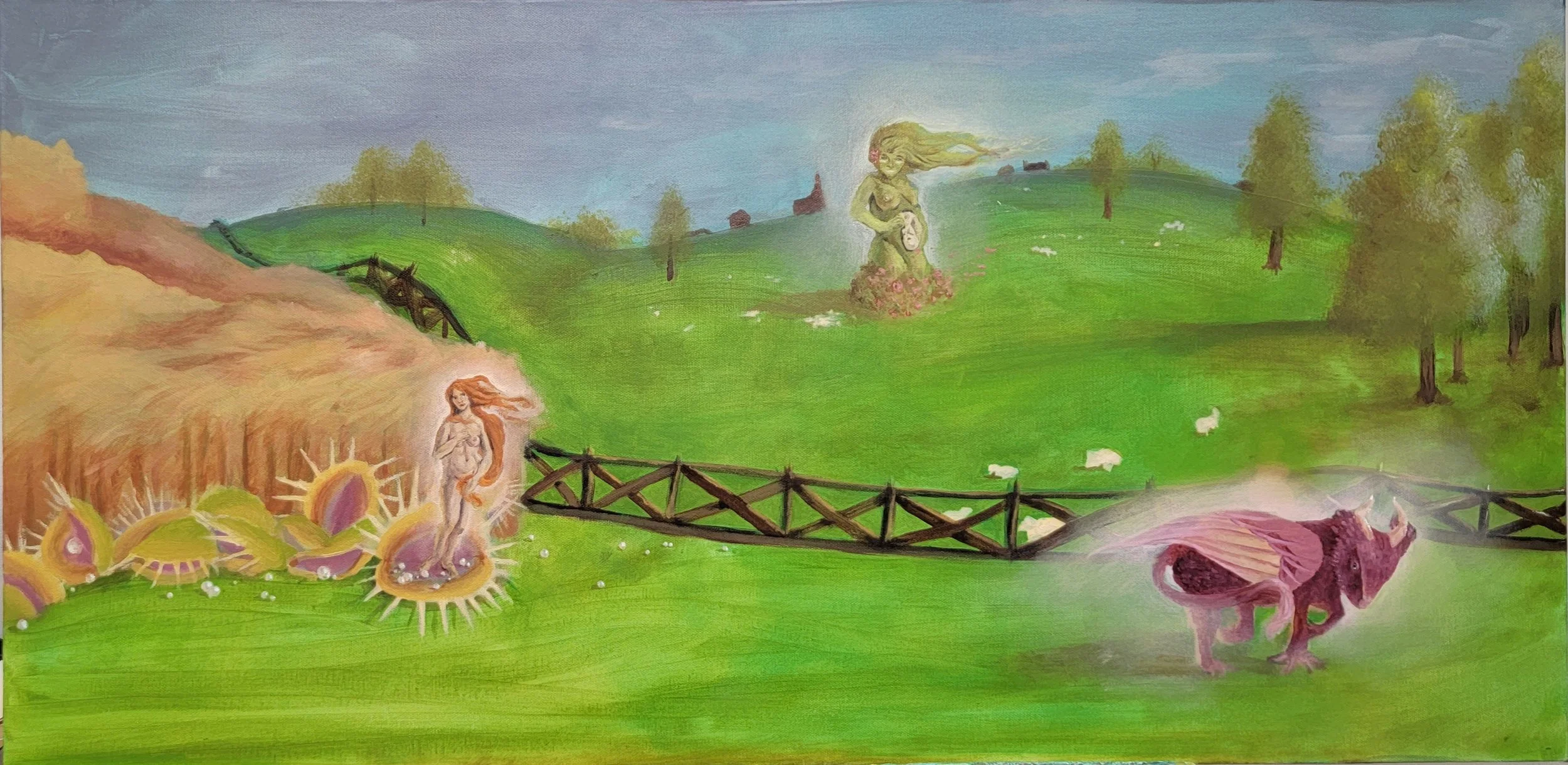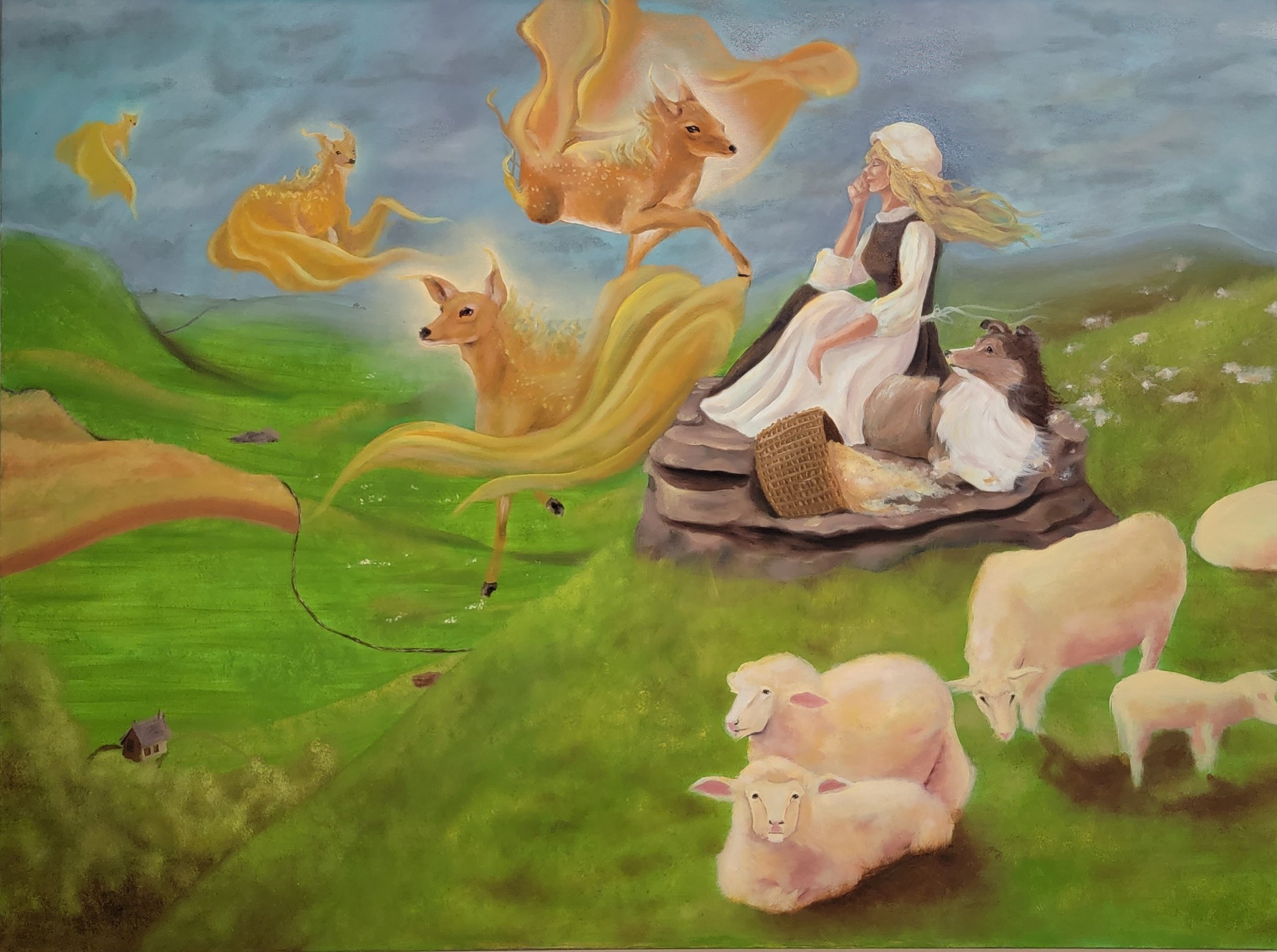Woolgathering
Maladaptive Daydreaming
Def. a mental health issue where a person daydreams excessively, sometimes for hours at a time. “Maladaptive” means this type of daydreaming is an unhealthy or negative attempt to cope with or adapt to a problem. - Cleveland Clinic
Woolgathering
Def. indulgence in idle daydreaming - Merriam-Webster Dictionary
Artist Statement
Woolgathering touches on a specific mental health issue that I’ve been dealing with ever since I was a child. That condition is called Maladaptive Daydreaming, which is defined as a behavior where a person spends an excessive amount of time daydreaming, often becoming immersed in their imagination. These dreams are intense, with whole worlds and plot lines being created in my own mind. They can be so extreme that a person can form addictive behaviors and want to spend all of the time they have escaping into their own made-up reality. This can cause people to procrastinate with their work, and it can even affect their relationships with their family and friends. Though it’s not recognized as a diagnosable mental condition, it is likely that it eventually will be due to the amount of research that is being undertaken, and it is often linked to other mental health disorders such as anxiety and ADHD.
I knew that I wanted to center my show around this theme from the start, and during my own research I stumbled across the term “woolgathering”, which is a term describing daydreaming or be idle. The phrase stems from the 16th century, where a Woolgatherer was an actual job position on farms. The wool from sheep would often get caught on fences and bushes, and someone was tasked with gathering these tufts so there was no wasted materials. Onlookers could see them walking around the farm, and many believed that they were just wandering around and not doing any work. So I thought it appropriate to use this not just as the title for the show, but the overarching theme for these pieces.
Each of these 8 pieces were made with oil paint, and as you can see, the main subjects are kind of unique. That’s because the fanciful creatures have all appeared in my daydreams at some point in my life. All pieces are set on a 16th century farmland, with fantastical elements merging with the reality of the setting. The dreams then become more prevalent, and the landscape itself begins to be less defined as the line between reality and imagination blurs. This directly reflects how I feel when I fall into these daydreams, as they are extremely detailed in both setting and context despite the mystical nature.
My goal with this show is to raise more awareness of this condition to the general public and to use my art as a healthier means of expressing my thoughts and feelings. My overall hope is that there can be more research and conversations surrounding mental health conditions in general. Though we have made significant strides in this area in the last few years, I feel that there is so much more that we haven’t fully researched yet. I also wanted to step out of my comfort zone and open myself up to everyone. I have dealt with extreme social anxiety for most of my life, and it’s difficult for me to communicate with others. Art gives me the ability to share myself with the world, even if for a small moment.








